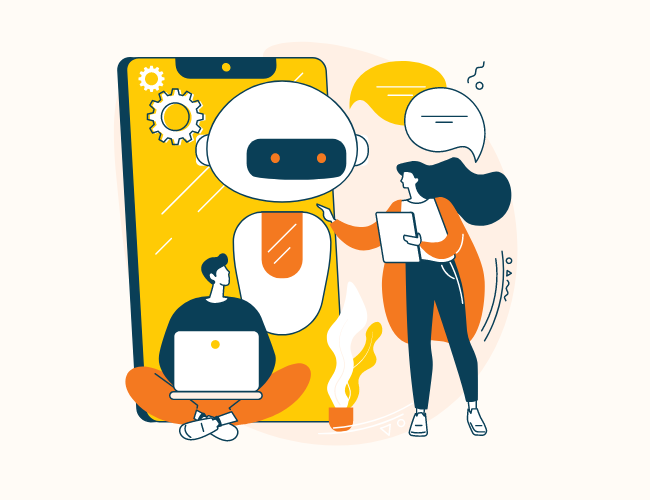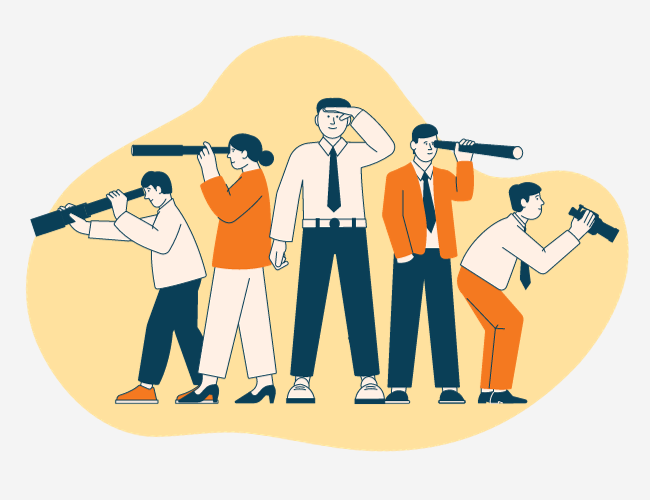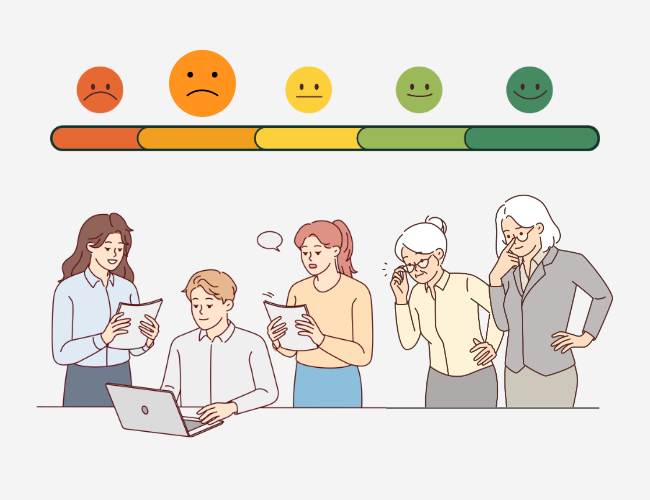Integrating artificial intelligence (AI) into the workplace is no longer a futuristic concept—it’s imperative for modern business success. Both employers and employees acknowledge this urgency, actively seeking opportunities to enhance AI skill sets.
However, the 2023 edX AI survey reveals that internal learning and development programs are struggling to keep pace with the rapid evolution of AI. As job security becomes increasingly uncertain, particularly for entry-level knowledge workers, the demand for adept upskilling has intensified.
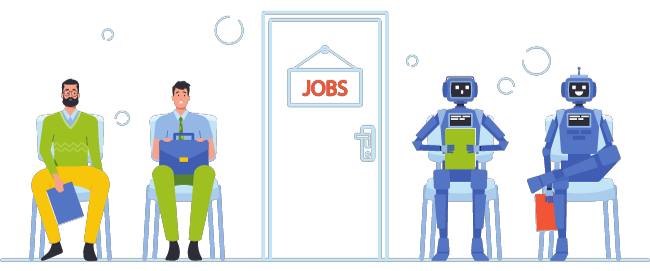
This article analyzes key insights from the edX survey, uncovers AI’s profound impact on the workforce, and presents strategies for cultivating AI-ready work environments through effective upskilling initiatives.
Pressed for time? Here’s a quick summary…
- The perception gap: While nearly half of CEOs believe AI could replace most of their job functions, only 20% of employees agree. Nevertheless, employees increasingly recognize that failing to acquire AI skills could make them replaceable.
- Underlying concerns: Over half of entry-level positions are estimated to be automated within the next five years, amplifying job security anxieties among employees. Meanwhile, executives worry about their own AI proficiency and the evolving skill set of their workforce, fearing potential obsolescence in an AI-driven corporate landscape.
- The upskilling challenge: Executives and employees alike acknowledge the urgency to upskill. Yet, existing in-house learning and development efforts have fallen short, pushing many employees to seek external learning resources over the past year.
- Cultivating an AI-ready workplace: Crafting a forward-thinking AI strategy should prioritize both operational efficiency and alignment with the company’s broader goals. Embracing diverse perspectives, addressing employee concerns, and setting realistic expectations are foundational in establishing a shared vision—one that fosters purpose and drives collective efforts toward success.
- Developing effective upskilling plans: Effective AI learning and development programs should be role-specific. This alleviates the overwhelming feeling that accompanies the vast AI knowledge spectrum and ensures targeted upskilling. Monitor progress and promote a culture of continuous learning, reminding employees that AI skill acquisition is a marathon, not a sprint.
AI’s Impact On Executives & Employees

The edX survey reveals a significant disparity in how C-suite executives and rank-and-file employees perceive AI in the workplace:
- 49% of CEOs believe that AI could automate “most” or “all” of their job functions.
- On the contrary, only 20% of employees share this view.
Although most employees don’t foresee AI automating their job functions, they increasingly recognize that failing to acquire AI skills could make them replaceable by more tech-adept counterparts.
The Underlying Concerns
Over the next five years, AI is estimated to eliminate over half of entry-level positions.
Beneath this perception divide lies a shared concern: the broader implications of AI in the workplace. While executives are prepared to harness the potential of automation, they aren’t immune to its uncertainties.
For the C-suite, personal AI proficiency and the preparedness of their workforce is a major concern:
- 79% of executives fear that failing to acquire AI skills will leave them unprepared for the future of work.
- 87% of executives struggle to find talent with AI skills.
- Executives estimate that nearly half (49%) of the skills present in their workforce today won’t be relevant by 2025.
- They also believe that 47% of their workforce is unprepared for the future of work.
For employees, job security is a looming worry:
- Only 52% of workers think AI will positively impact the workplace.
- Entry-level knowledge workers are at the greatest risk of being replaced by AI—over the next five years, AI-driven automation is estimated to eliminate over half (56%) of entry-level positions.
This looming uncertainty is amplifying the pursuit of better learning and development opportunities.
The Urgency Of Upskilling & Internal Shortcomings
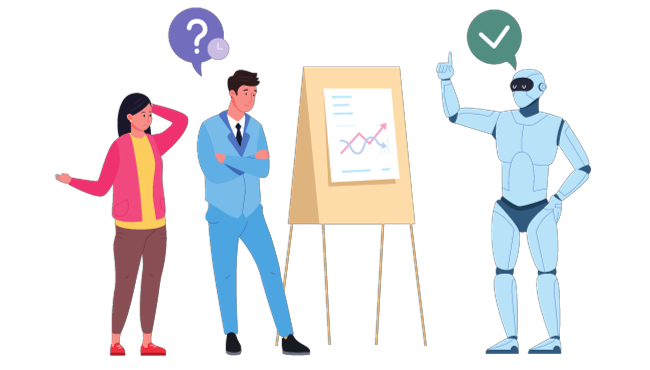
Employees and executives alike recognize the urgency to upskill, but internal programs are falling short. A significant portion of C-suite leaders (89%) and employees (57%) have sought external learning resources in the past year, which often came at a personal cost.
For employees in particular:
- Only 24% are utilizing their company’s programs to learn AI skills.
- 21% are learning independently due to a lack of suitable training within their organizations.
- A significant 84% expect their employer to provide the necessary training and education to keep their skills up-to-date.
Many employees are looking to their companies as the new “post-secondary colleges”, responsible for continuing employee education—a viewpoint shared by 93% of the C-suite. Employee expectations are increasing, and their loyalty is on the line: four in 10 will consider changing jobs for better learning and development opportunities.
Organizations must address the gap between the demand for upskilling and the supply of effective internal resources. This will not only future-proof businesses but also sustain employee retention and overall job satisfaction.
Strategies For Cultivating An AI-Ready Workplace
Good intentions aren’t enough to adapt to AI-driven transformation; organizations need concrete strategies to create a work environment conducive to change.

Create A Shared Vision For AI
- Encourage Dialogue Between Executives & Employees: Facilitate dialogue between individuals of all organizational levels to ensure the incorporation of diverse perspectives in shaping a unified AI vision. This fosters inclusion and ownership over the company’s future with automation.
- Formulate A Shared Vision: AI’s value lies not just in its capabilities but in its capacity to transform an organization. Crafting a unified vision—one that emphasizes both efficiency and the broader impact on the company’s mission—instills a sense of purpose and drives collective efforts toward AI-driven success.
Whilst we will continue to establish new industrial practices, the potential for artificial intelligence to completely transform the landscape for audio and audio-visual work cannot be understated. As we move forward with this innovation, an artist-centric approach is vital to safeguard the future of our world leading entertainment workforce.
The Vision Statement outlines eight principles for the industry to adopt when engaging artists for the purpose of performance cloning.
Artists being engaged for the purpose of performance cloning have the right to:
1. Consent (and not consent) for past, current and future performances
2. Licence their performance or likeness on personal, non-exclusive, time limited basis
3. Be identified and object to derogatory treatment of their performance and work
4. Transparent information
5. Meaningful consultation
6. Fair and proportionate remuneration
7. Equal access and treatment
8. Be engaged under a collectively bargained agreement”
– Equity, the UK performing arts and entertainment trade union
Develop Effective Upskilling Plans
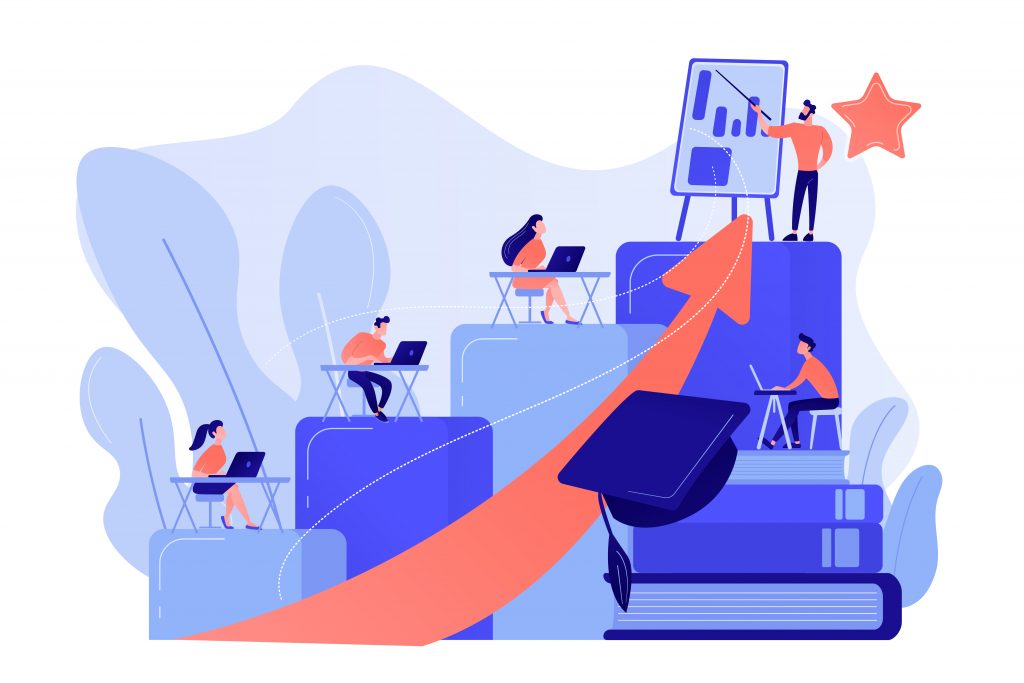
- Tailor Upskilling Programs: One size doesn’t fit all when it comes to learning. By tailoring upskilling programs to individual needs, employees can acquire AI skills relevant to their roles. This promotes professional growth and alleviates the overwhelm that accompanies the breadth of AI skills, allowing employees to maintain a targeted approach within an outcomes-based program.
- Monitor & Evaluate Progress: Leveraging data to monitor and evaluate progress allows organizations to continuously fine-tune their initiatives, ensuring employees acquire the necessary skills to thrive.
- Promote Continuous Learning: In the age of AI, adaptability is synonymous with survival. Promote a culture of continuous learning, where the pursuit of knowledge is ingrained in the company’s DNA. Organizations that embrace learning as a perpetual journey rather than an endpoint are not just ready for change, but actively drive it.
Foster Open Communication

- Create Platforms For AI Discussions: Designate a platform for open conversations about AI and its impact, providing an outlet for those seeking relief or reassurance amidst uncertainties. These discussions also allow for knowledge sharing and collaborative learning, ensuring everyone stays informed about the evolving AI landscape.
- Address Concerns & Set Realistic Expectations: Given employee job security concerns, organizations must prioritize a collective understanding of AI’s current and future role within the company. Transparency is crucial to ease anxieties and establish trust. Establish realistic expectations by reassuring team members that they aren’t expected to become AI experts overnight.



